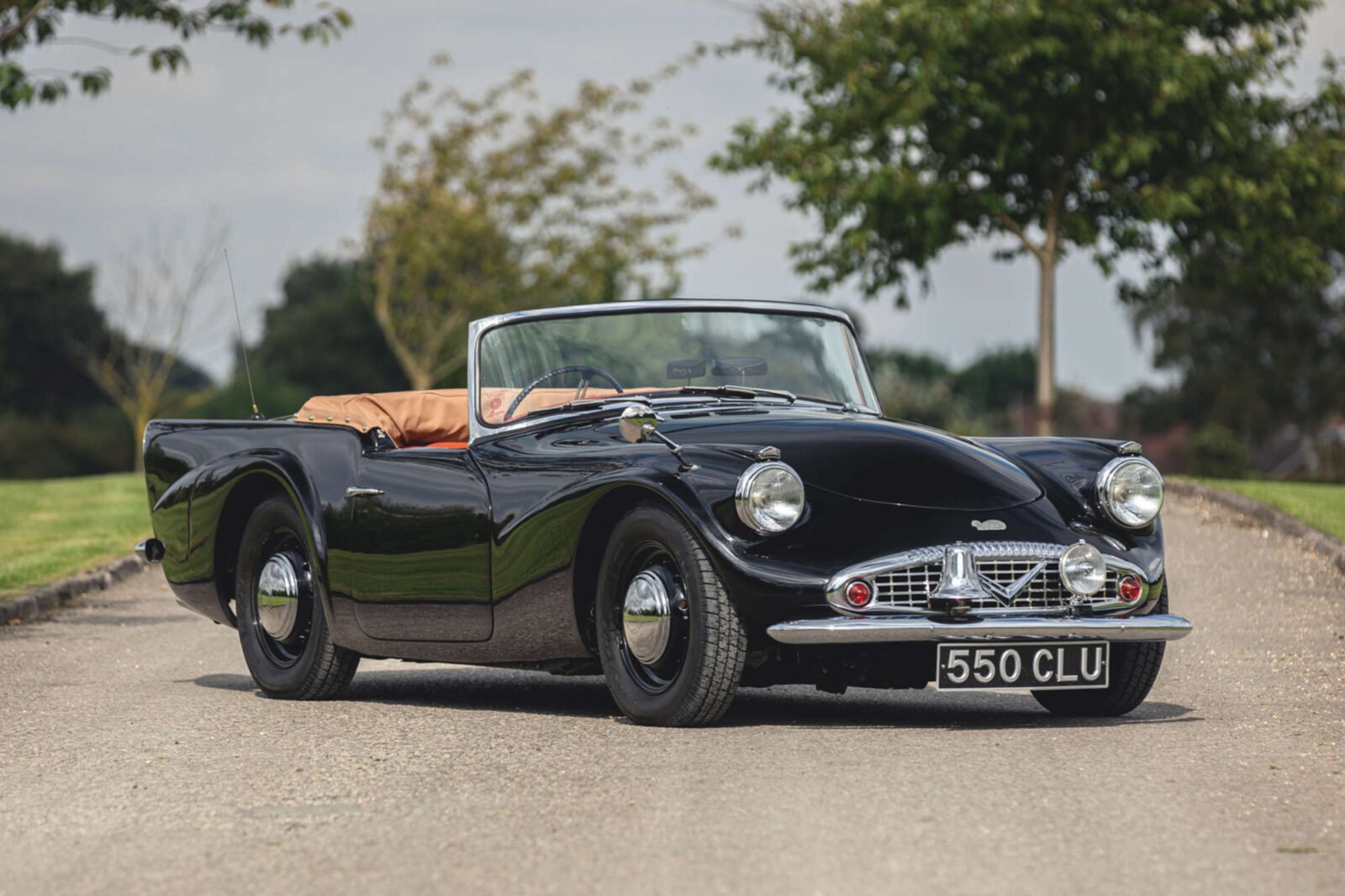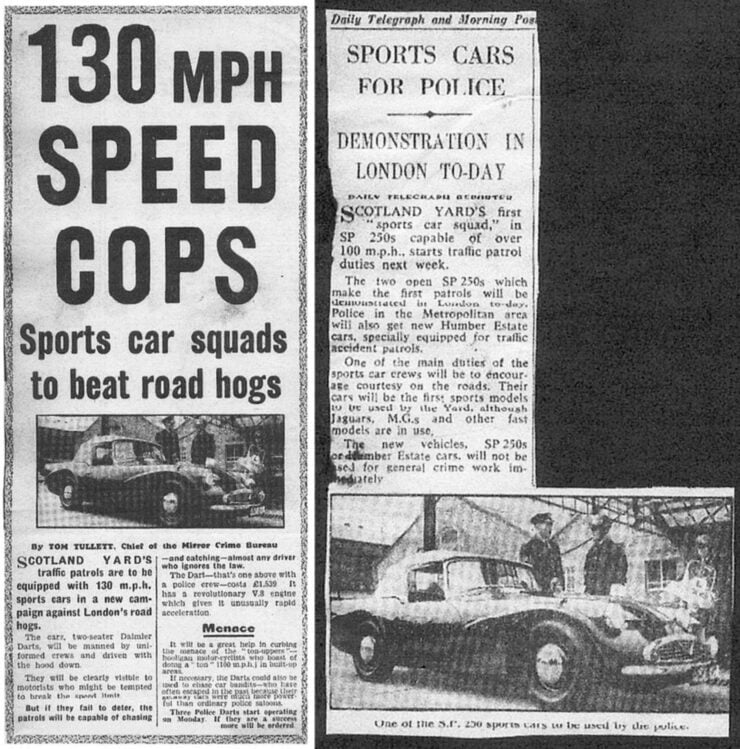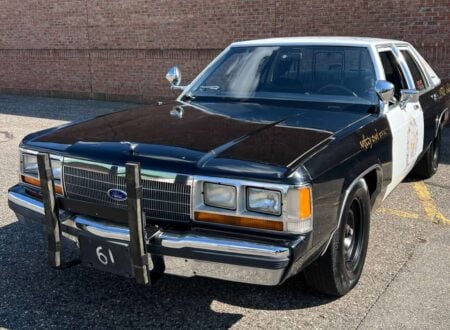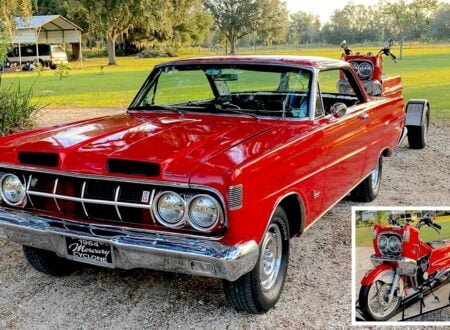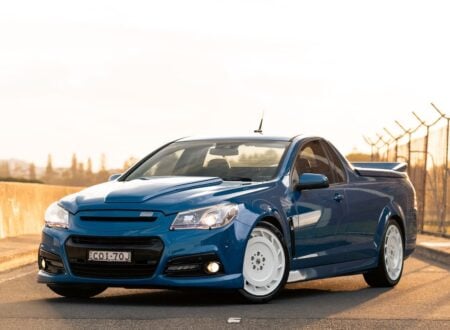The Daimler SP250 is a V8-powered British sports car famous for a number of things in classic car circles, the three most common of which are that the car is powered by an excellent 2.5 liter V8 engine, it was used by some British metropolitan police departments as a high speed pursuit vehicle, and that it’s widely considered to be as ugly as a wheelie bin full of dead badgers.
Before the irate all-caps emails begin let me just say – when it comes to aesthetic sensibilities everyone has their own personal tastes, and it should be noted that there are many in the classic car world who love the SP250’s unusually styled fiberglass body. Jay Leno is one of them.
Fast Facts – Daimler SP250
- A number of Daimler SP250s were bought by British police departments to help combat speeding drivers, and in particular speeding motorcyclists on their “cafe racers.”
- The SP250 has been likened to a British Corvette as it has a steel chassis with a convertible fiberglass body and a V8 engine under the hood.
- Jay Leno owns an SP250 and he’s famously a big fan of the model, particularly its hemi V8 engine.
- Daimler developed the car in the late 1950s and released it in 1959, it was then sold until 1964.
- The SP250 was introduced in the United States at the 1959 New York Motor Show, where it was immediately voted the ugliest car at the show.
The Daimler SP250 – An Acquired Taste
The Daimler SP250 was developed by the British automaker specifically to increase sales in the United States. The 1950s was characterized by “Jet Age” automobile styling, particularly in America, and so the SP250 was given ample rear fins and plenty of chrome elements.
Above Video: Jay Leno is the Daimler SP250’s most famous fan, he restored one with his team a few years ago and in the above episode he sings the praises of the unusual car.
The SP250 was the first proper sports car developed by Daimler and this lack of experience was apparent in the first series of cars, now retroactively referred to as the A-spec vehicles. The 14 gauge steel ladder frame chassis with cruciform bracing was too flexible for sporting driving, and doors were known to fly open when cornering at speed.
The concept of a fiberglass body was relatively new at the time, though the Chevrolet Corvette had been using the same material since it was introduced in 1953 and British automakers like Jensen were using it extensively.
Although we can never know for sure, it’s likely that if the Daimler SP250 had more universally popular styling it likely would have enjoyed strong sales in the United States, and it may have avoided the offloading of Daimler by its parent company BSA to Jaguar in 1960.
That said, the Jaguar acquisition was actually good news for the little Daimler sports car. Jaguar engineers were among the best sports car designers in the world with multiple 24 Hours of Le Mans wins under their belt. After the Daimler was acquired those same Jaguar engineers set about designing the chassis and developing the B-spec version.
The B-spec Daimler SP250 handles like an entirely different car thanks to the changes made to stiffen the chassis, extra outriggers and a strengthening hoop between the A-posts was added, the difference was considerable but by this time the car already had its reputation.
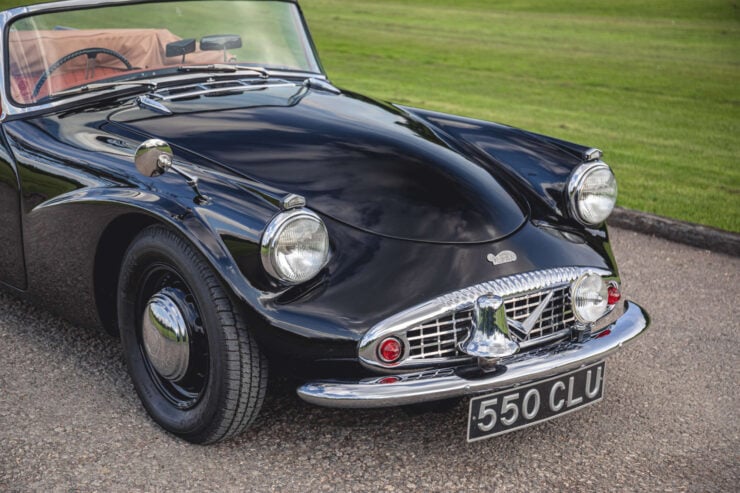

A C-spec version of the car was released in 1963 with a few small upgrades but by this time it was clear that the SP250’s days were numbered. Sales were slow, and the Jaguar E-Type had been released in 1961 which was proving to be a huge sales success for the company.
Jaguar did develop some prototypes of the Daimler SP252 with some E-Type styling cues included, however the car never made it into production, and SP250 production ceased in 1964 with just 2,654 built – far shy of the original projections of 3,000 per year.
This wasn’t the end of the road for that hemi-head V8 used in the SP250 though, it was fitted to the Daimler 2.5 V8, a four-door sports saloon car directly based on the popular Jaguar Mark 2.
The Ex-British Police High Speed Pursuit Car Shown Here
The car you see here is one of just 26 or so examples that were bought by police departments in the United Kingdom and used as high speed pursuit vehicles. These cars quickly entered into automotive legend thanks to their top speed of 125 mph, a remarkable figure for the era, and their ability to catch and arrest speeding cafe racers.
Many British police were assigned Wolseley saloons, exceptionally slow cars that didn’t have a hope of running down speeding motorcyclists. The cafe racer movement started in England in the late 1950s, young men would buy motorcycles and tune them for speed. Illegal street races were held from places like the Ace Cafe in London, many young people died and the general public were demanding that something be done.
As a result, somewhere between 26 and 30 Daimler SP250s were bought and assigned to officers in problem areas. The cars were all fitted with three-speed automatic transmissions, as well as police lights, sirens, and badging.
The car you see here is known by its UK registration number of 550 CLU, it’s had a full nut and bolt restoration to Concours condition and it’s a multiple award winning vehicle. Interestingly this is also the car used as a model by Oxford for their 1/43rd scale model of the police edition of the SP250.
This car is due to roll across the auction block on the 13th of November with Silverstone Auctions, if you’d like to read more about it or register to bid you can click here to visit the listing.
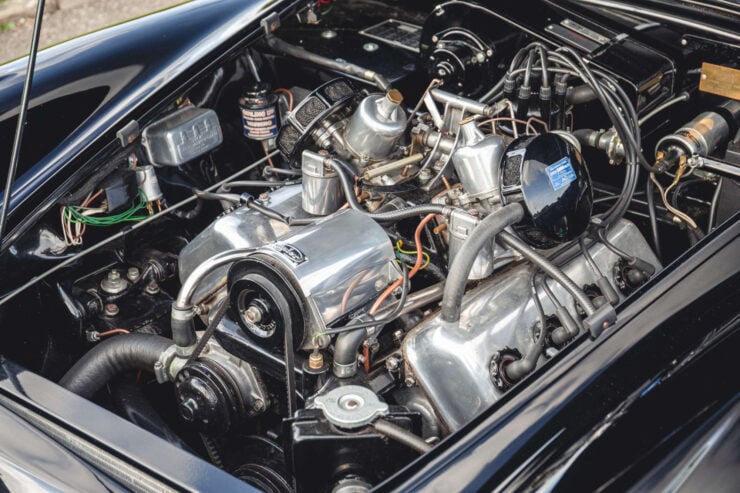
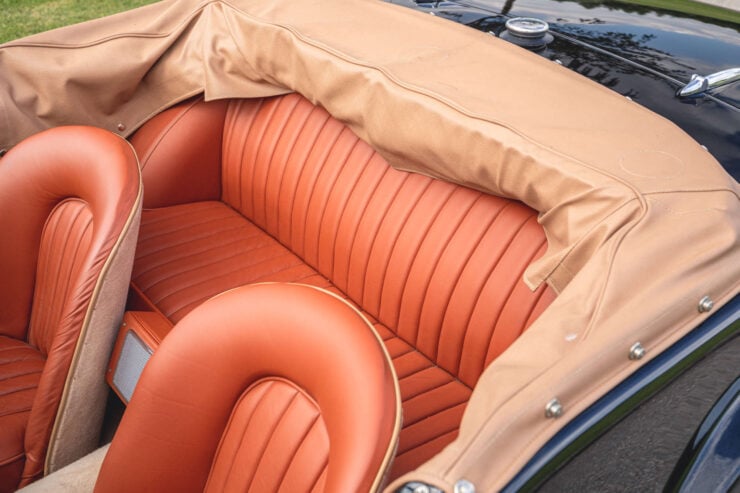
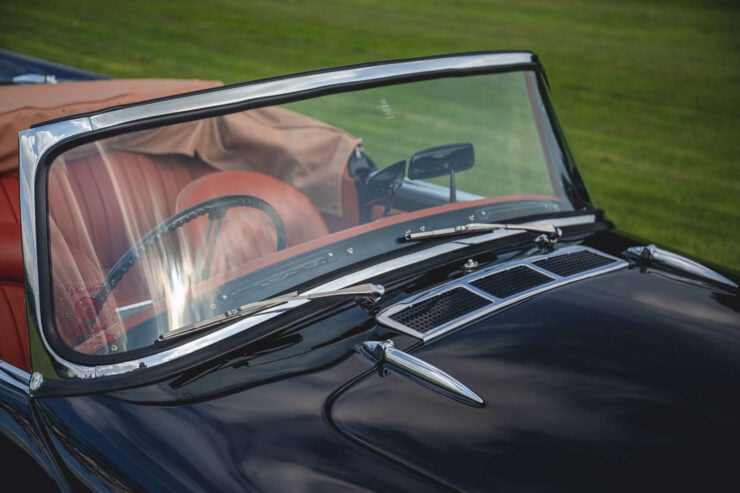
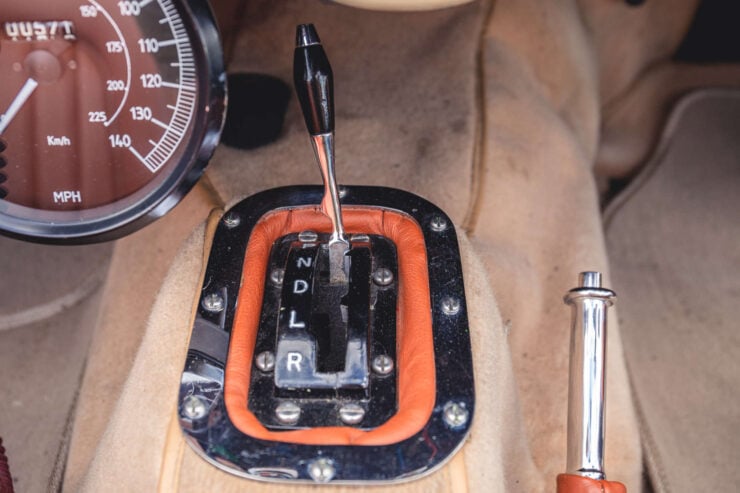

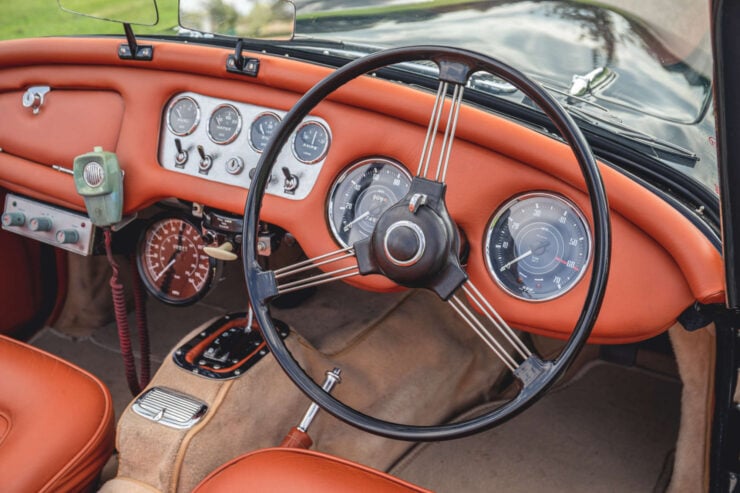
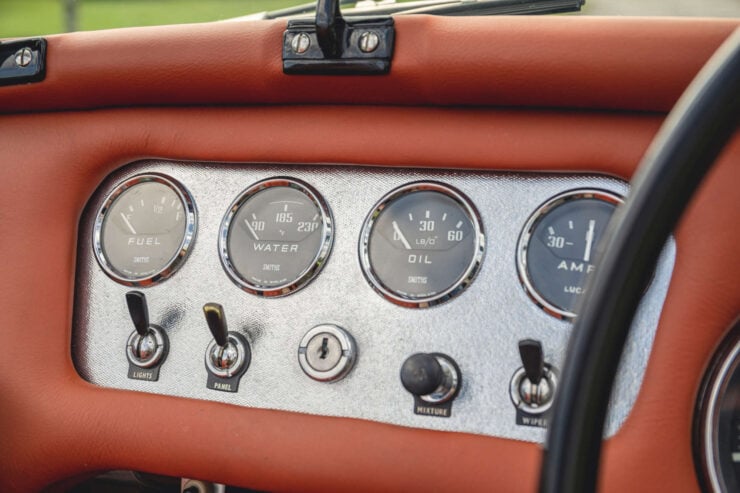
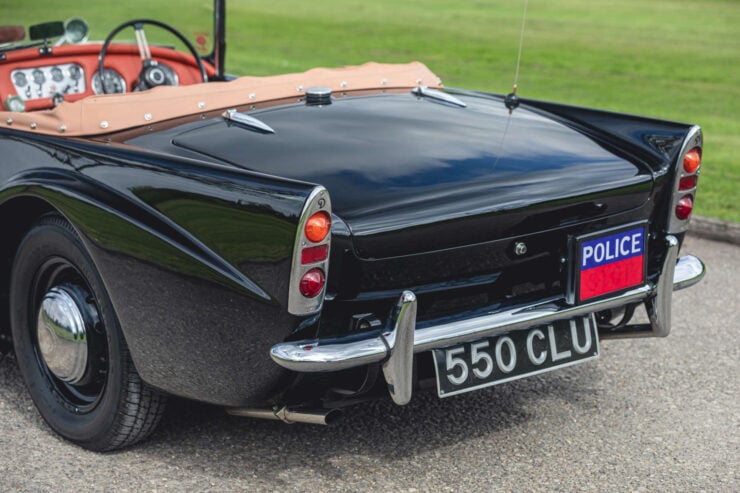
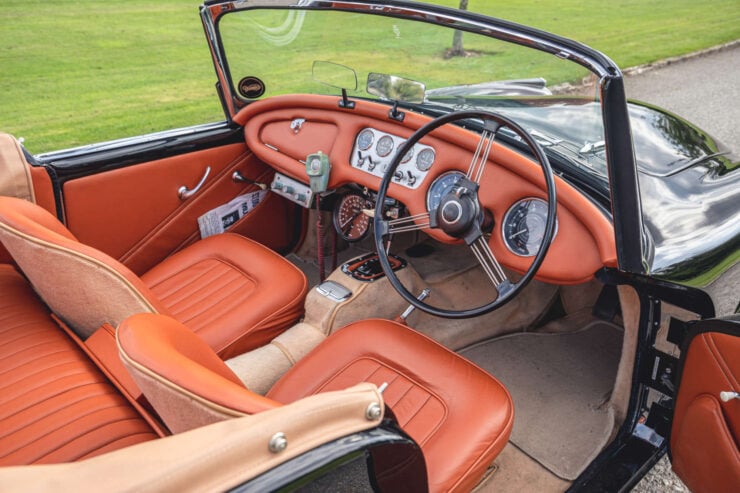

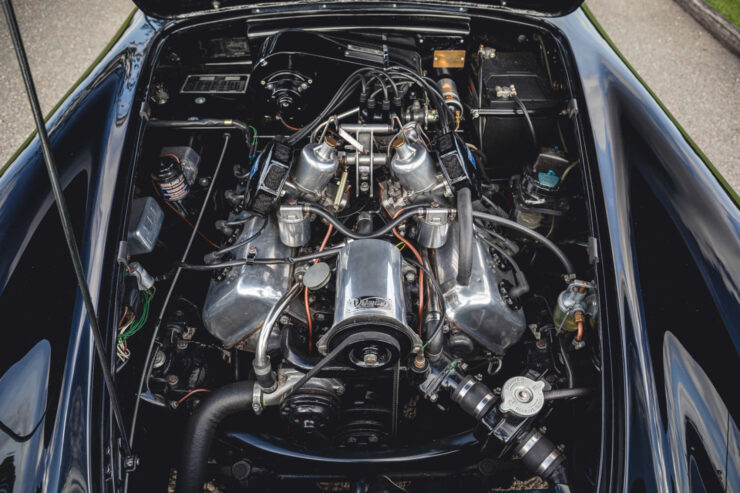
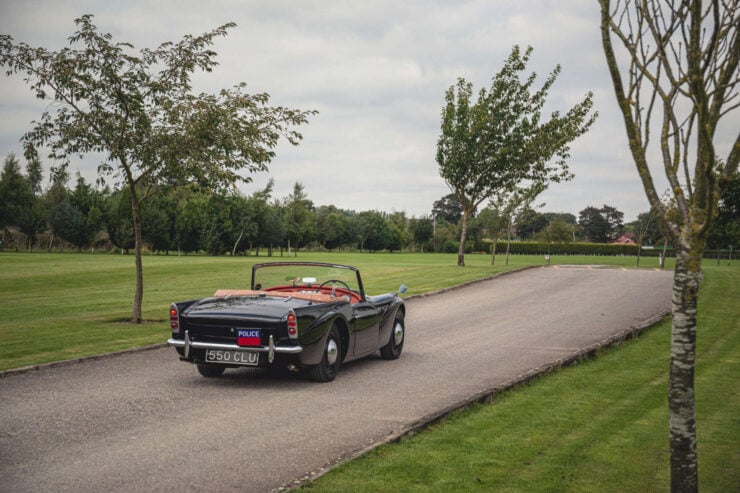
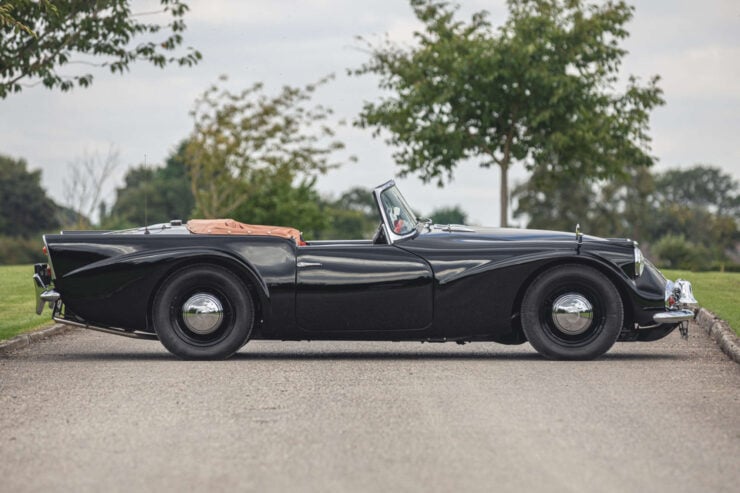
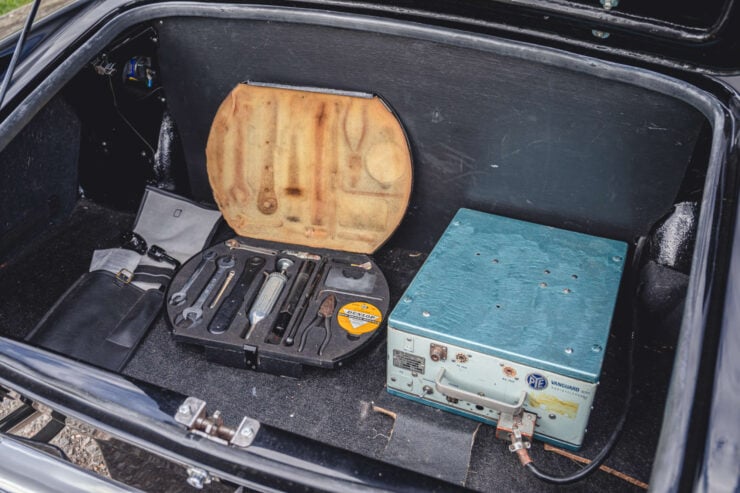
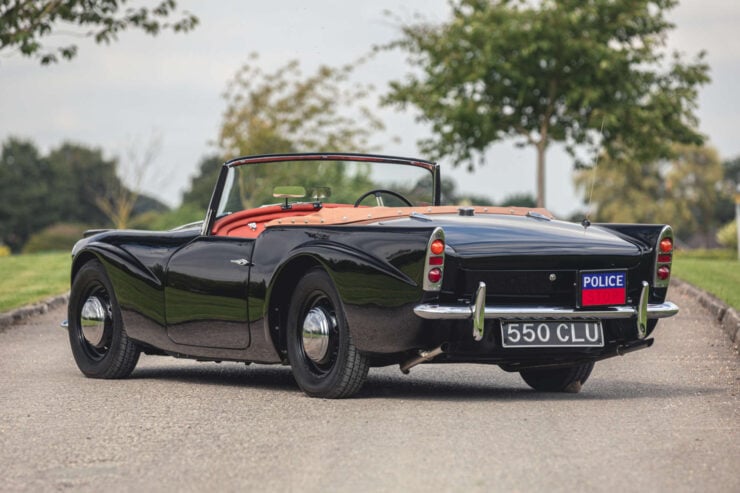
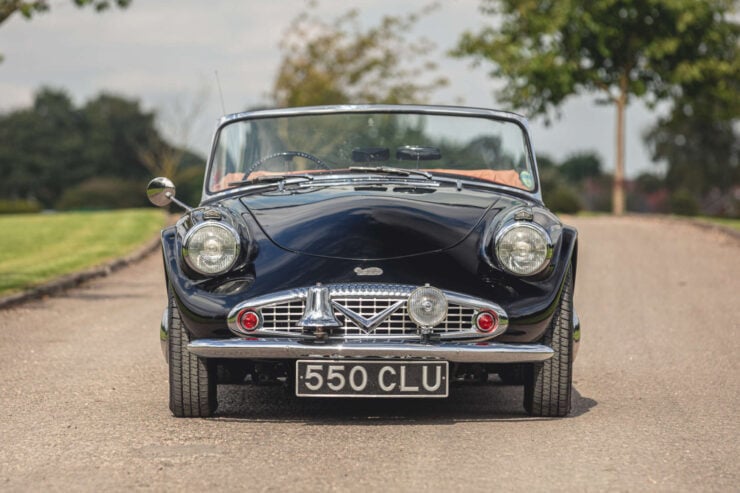
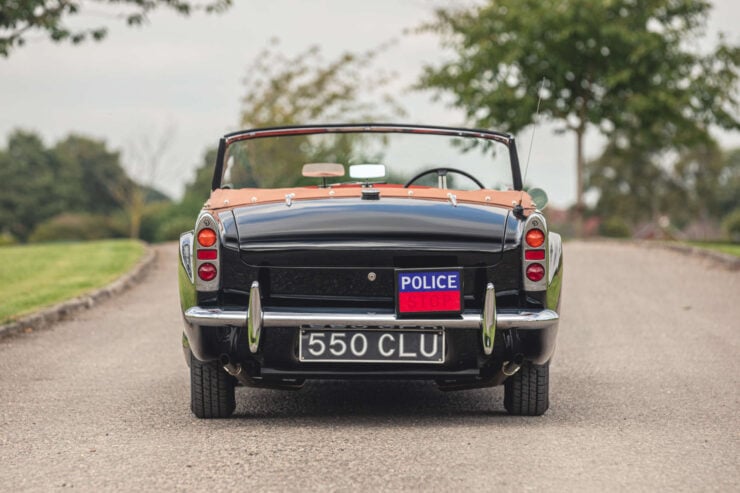
Images courtesy of Silverstone Auctions

